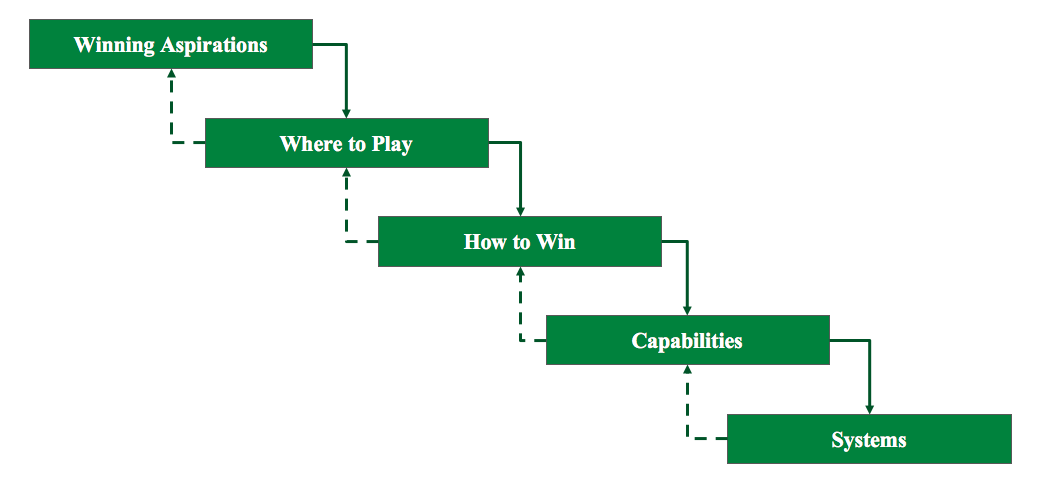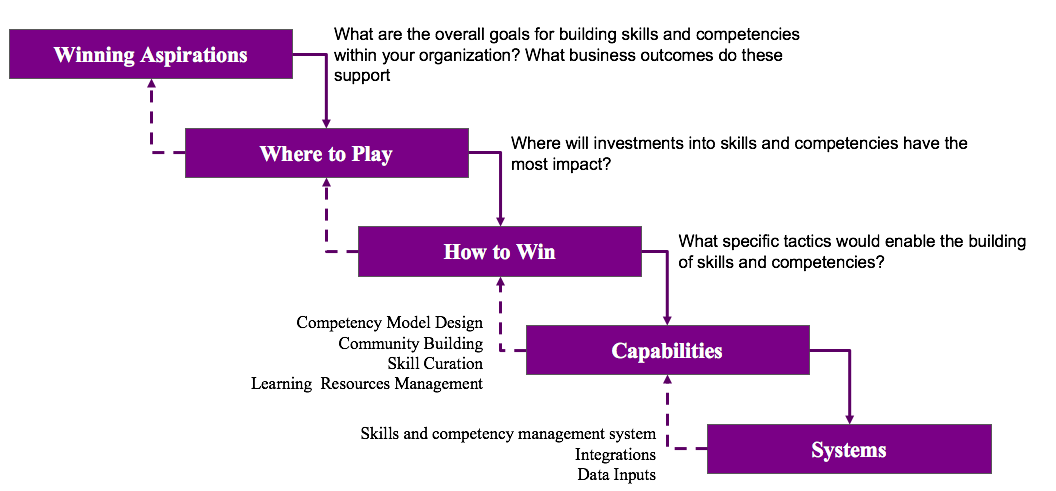A simple template to apply Roger Martin's Strategic Choice Cascade to Talent
Rashaqa Rahman is a Principal Consultant at Ibbaka. See her skill profile here.
Many companies struggle to leverage the skills and competencies within their organization to drive value and differentiation. Oftentimes this is because they find it challenging to connect their talent development strategy to specific outcomes and execution. In today’s dynamic and rather uncertain world, once and done strategies developed within the HR silo are not effective.
At Ibbaka, we have applied Roger Martin’s Strategic Choice Cascade to develop a simple template that will help organizations think through the strategic choices made in building skills and competencies, understand the impact of these talent choices, as well as the outcomes that will be delivered to the organization, team and individuals.
Download the template for Strategic Choice Cascade for Talent
Roger Martin has helped companies like Procter and Gamble and Lego reinvent themselves and connect their strategy to execution, using the Strategic Choice Cascade framework. This framework was popularized in the book Playing to Win: How Strategy Really Works, that Roger Martin co-authored with P&G CEO A.G. Lafley, and is sometimes referred to as ‘playing to win choices.’
The classic strategic choice cascade looks like this.
It is well tested and has been applied in many different contexts. For our purpose, we have created a version specifically for organizational skills and competency development work. It can be used to frame talent choices and connect skills and competency development to strategy and business outcomes.
We have found that the Strategic Choice Cascade for talent helps to …
Get alignment between key stakeholders and build cross-functional alignment
Bring focus. to specific business outcomes
Make specific choices (e.g internal mobility, team building, talent acquisition), while considering the specific outcomes at various levels (individuals, teams, organization)
Provide structure and assesses feasibility, by connecting specific tactics to capability and systems requirements
Reinforce the importance of having the right capabilities in place, as well as connects capabilities to outcomes
Put decisions on systems and processes in context (the right system depends on all of the other choices, do not lead with system)
Our Strategic Choice Cascade for Talent is a simple template that provides a step by step guide to making these choices, as well as a place to gather your choices and connect them to specific metrics and business outcomes.
Ibbaka is providing these downloadable tools under a Creative Commons license. Attribution-NonCommercial 4.0 International (CC BY-NC 4.0)
There are many other applications of the strategic choice cascade. We have also developed a template for those who need to apply it to pricing work. Get the Strategic Choice Cascade for Pricing here.





